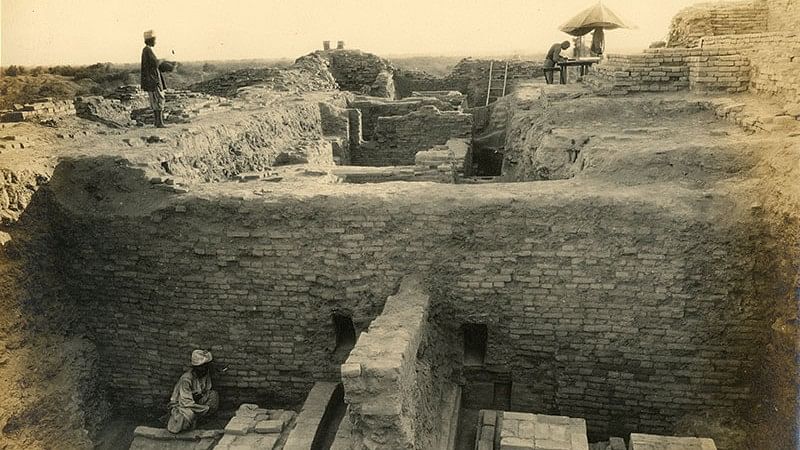
File photo showing the Rakhigarhi site at Hisar in Haryana where Harappan remains were found by ASI in a series of excavation activities conducted through years.
Credit: asi.nic.in
The National Council for Education Research and Training, the Centre's advisor on changes to school education recently introduced certain revisions to the history syllabus of Class 12 students highlighting that Harappans were based out in Rakhigarhi, which is an Indus Valley site in Haryana's Hisar.
The course regulating body— NCERT cited certain "archaeological findings" that apparently call for "corrections" in the history book's chapter of Class 12 titled— Bricks, Beads and Bones— The Harappan Civilisation. A report in the Indian Express said that NCERT's reference of archaeological findings at Rakhigarhi site also show that Harappans belonged to the Haryana site, even before the migration of Aryans. The findings, NCERT claimed, also showed that "Harappans followed a democratic system".
The NCERT has also introduced certain revisions to the History and Sociology textbooks of students in Class 7, 8, 9, 10, and 11. However, the changes to the Class 12 history syllabus is the most evident.
What ASI found in the previous excavation?
Rakhigarhi in Hisar is also said to be the largest archaeological site from the pre-Harappan period. The Archaeological Survey of India has carried multiple excavations at the Rakhigarhi site— in seasoned gaps.
During the excavation in 2022, the ASI found mounds 1, 3 and 7 that were taken up, and in total 13 trenches were excavated. The ASI had said that findings indicated the presence of industrial society, replete with a planned city with a complex street system on raised platforms, and houses with extensive layouts, and a drainage system.
Deletions and inclusions from Class 12 history syllabus for 2024-25
The current revisions to the textbook will be for the academic year 2024-25 and the NCERT also apprised the Central Board of Secondary Education regarding the same recently. Emphasising that "Harappans are the indigenous people of this region"— certain paragraphs in the revised Class 12 history book rule out any "large-scale immigration of Aryans".
The NCERT has also deleted certain parts from PUC II history textbook claiming that there needs to be a continuity to the context. “It appears that there was a break between the Early Harappan and the Harappan civilisation, evident from large-scale burning at some sites as well as the abandonment of certain settlements,” read one such para that has been omitted.
A new paragraph in the text which stresses on genetic details excavated by ASI at Rakhigarhi reads: “The genetic roots of the Harappans go back to 10,000 BCE. The DNA of the Harappans has continued till today and a majority of the South Asian population appears to be their descendants. Due to trade and cultural contacts of the Harappans with distant regions there is a mixture of genes in small quantity."
The para goes on to describe: "The continuity without any break in genetic history as well as cultural history rules out large scale immigration of the so-called Aryans. This research also indicates that the people coming from the bordering areas and distant regions were absorbed in the Indian society. At no stage, the genetic history of the Indians was either discontinued or broken. As the Harappans started moving towards Iran and Central Asia, their genes also gradually spread in those regions.”
NCERT, meanwhile, has also maintained scope for more research and study into the findings from excavations of ASI. For instance, another para in the textbook reads: "More research is also required on the relationship between the Harappans and the Vedic people as some scholars have argued that the authors of the Harappan civilisation and the Vedic people were the same.” This sentence, NCERT states, has been added for “critical thinking of the students.”